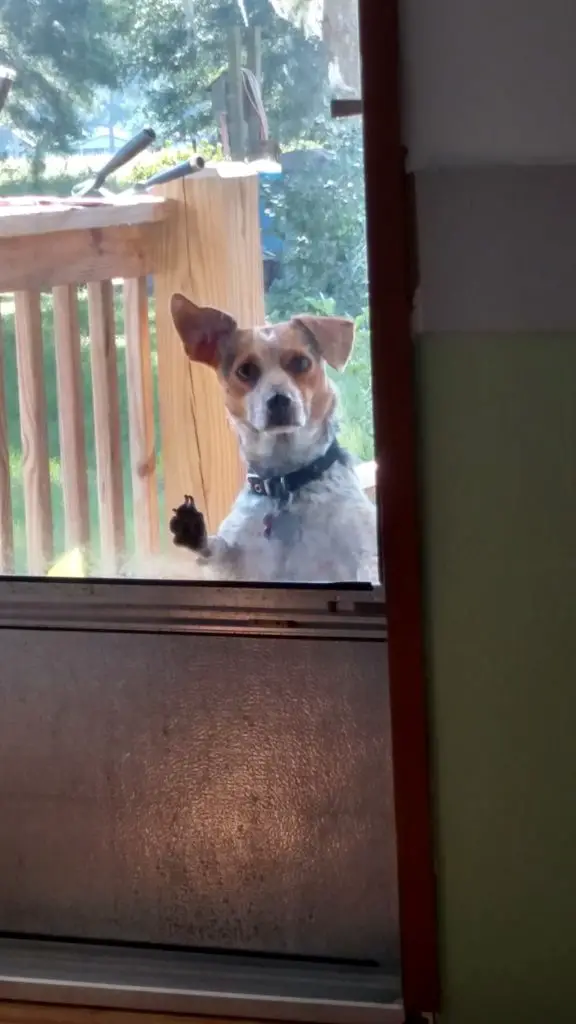Table of Contents
*This post may contain affiliate links. As an Amazon Associate we earn from qualifying purchases.
If you own a dog, sooner or later, you’re going to confront the question of crate training. Some people swear by it. Others are dubious. But what is crate training? When and why might it be beneficial? What are the downsides? And, most importantly, if you choose to
What is ‘Crating’?
Crate training means teaching your dog to spend time in a carrier, crate, cage, or box. That sounds awful! It certainly can be, if you don’t do it right, or for the right reasons.
But, under certain circumstances, crate training can be a useful tool. Some of those circumstances include housetraining, or, more broadly, while your dog is learning the house rules.

Crate training uses your dog’s natural instinct as a den animal. Done correctly, your dog’s crate will become a safe space, a place of comfort, and somewhere they will go voluntarily when they want a bit of quiet.
Doing It Wrong
As with many training methods, the problems that arise from crate training are mostly due to owner error — that is, doing it wrong. And the results can be serious.
How serious? Try anxiety, destructiveness, aggression, fear, and even self-harm. No one wants that.
But what does it mean to do crate training wrong?
Crating for too long
One of the worst errors an owner can make is to assume that
You can’t leave a dog in a box all day, or worse, for several days. Dogs are emotionally complex creatures that need exercise and attention. They’re pack animals and need to be part of the family. They’re not a toy to be taken out when you feel like it and put away the rest of the time.

The Dogington Press recommends eight hours in a crate as an absolute upper limit. But really, they say, four hours is a much better maximum. And the Humane Society recommends against
Making it a permanent solution
Crate training is ideal when your dog is learning the house rules, such as “do your business outside,” or “don’t chew the furniture while I’m at the supermarket.” It’s a safe, temporary place to make sure your dog will stay out of trouble for short periods when you’re not there to reinforce the rules.

That said, it’s not a way to relieve yourself of the responsibility of training your dog. You should be setting expectations for your dog, and showing them how to meet those expectations, rather than using a crate as a crutch.
Once your dog has learned the house rules, the crate should transition from being a place of confinement to a safe place that they go into and out of voluntarily, and when they feel like it.
Using crating as a punishment
Don’t do this.
If you use confinement as a punishment, your dog will come to fear the crate, and to associate it with your anger. This will make it an ineffective training tool, but worse, it may create anxiety and aggression in your dog that didn’t exist before.
Not training for it
It’s not just a matter of shutting your dog in a box. Imagine how you would feel if someone thrust you into a closet, without warning, for hours at a time. With a small dog like a Jack Russell, it can be tempting to use our superior size and strength to put them where we want them. But that’s a mistake.
Dogs are intelligent and sensitive. They can understand our expectations if we make those expectations clear. And if we introduce the crate in a sensitive, loving, positive manner, it can become a place of safety and comfort for your dog.

How Do You Crate Train Your Dog?
So, now that you know how to do it wrong, how do you do it right?
The Humane Society recommends the following steps. They caution that the process may take a few
First, make sure you have the right sized crate. Your dog should be able to stand up and turn around easily.

The introduction
Next, take some time to get your dog used to the crate and being inside it. Leave the crate open, and let them explore. Entice them inside with treats or toys. Let them be inside with the door open. Speak to them in a happy, playful voice when they approach the crate.
Mealtimes
Once your dog is used to walking in and out of the crate, feed them their meals inside it. This will increase their positive associations with
Gradually begin to leave the door shut for longer after each meal. Do this until they can stay in the crate for ten minutes. If they being to whine, you may be increasing the time too quickly.
Extending the crating period

Once your dog can eat in the crate without fear or anxiety, experiment with longer crate times while you’re at home.
First, call them over to the crate, and give them a treat. Then, use a command, like “crate,” or “go home.” When they enter the crate, give them a treat and praise, and close the door.
Stay with them for a few minutes, then leave the room. Come back after a few minutes and sit with your crated dog. This will teach them that you will come back.
When your dog can stay quietly in the crate for half an hour without you there, then they’re ready for longer crating periods. If you’re planning to
For more detailed instructions, check out the Humane Society’s excellent article on crate training.
Is It For You?
Crate training isn’t for everyone. If you’re home most of the time, you might not need it at all.
However, if you’re looking for a temporary training tool while your dog gets used to the house rules, crating can be very useful.
Just do it right, and do it with love.
Featured image: CC0 via Public Domain Pictures

